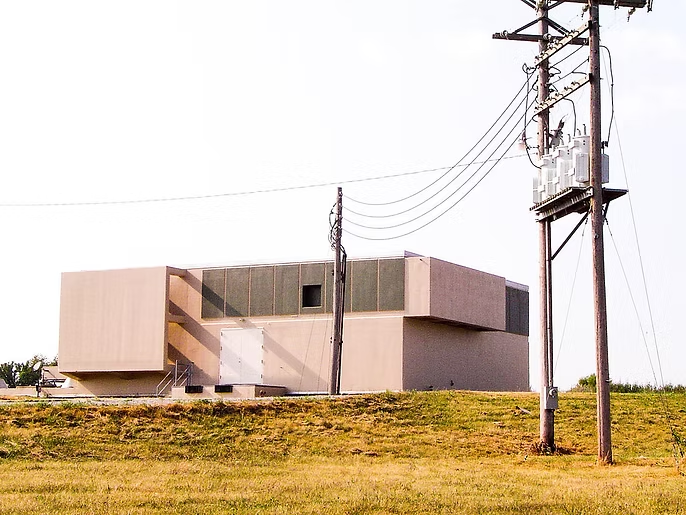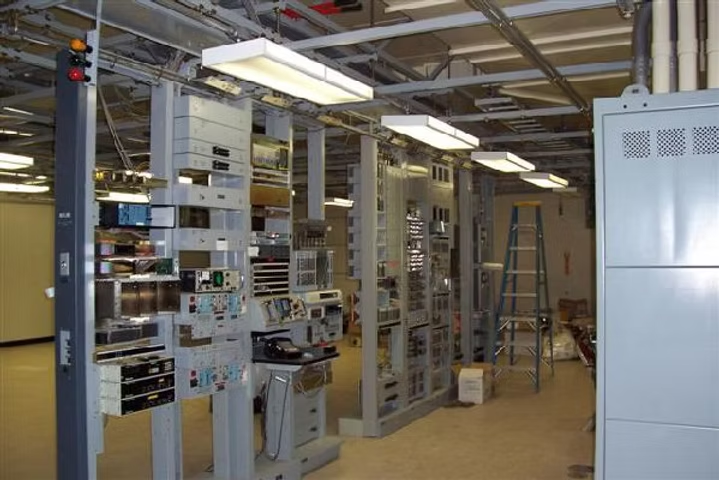AT&T Long Line Communication
In the 1960's, a system of underground nuclear-hardened telephone booster stations was built to assure uninterrupted communications in the event of a nuclear attack. The systems used copper bundle phone lines. The average construction cost in 1960 was $4 million. Today, the newer fiber-optic lines made these facilities obsolete. Closed in the mid 1990's, these stations are generally in better condition than many of the missile bases that were abandoned in the '60's.
General Layout & Features
AT&T Bunkers are large underground structures, ranging in size from 6,000 square feet to 55,000 square feet, though most average around 8,200 square feet. Ceiling heights of 16' are common. The bunkers were equipped with cooling and exhaust for dual electric generators, which often remain on-site. Three-phase electrical service, an electric hoist, sewage ejector pumps, sump pumps, heaters, air conditioning, and dehumidification equipment is usually still in place and functional. Heavy blast doors, a decontamination shower, escape exit and elaborate air filtration systems with shut-down are also usually in place. Owing to their more recent release and in-tact equipment, these are some of the best Cold War structures available.
The Land
Tracts for these properties ranges from 5-15 acres, occasionally more. Some have high chain link fencing, paved parking, water wells, 10,000 gallon stainless steel water storage tanks and functional sewage disposal systems.

